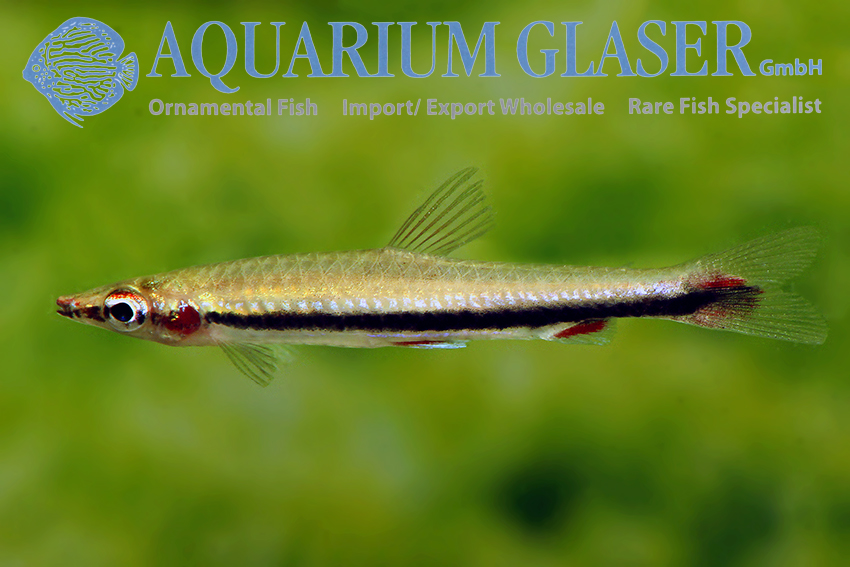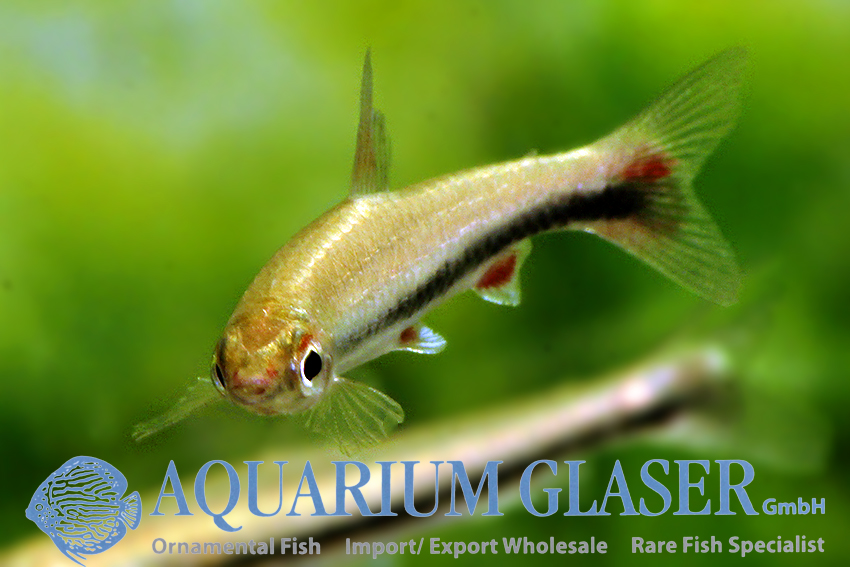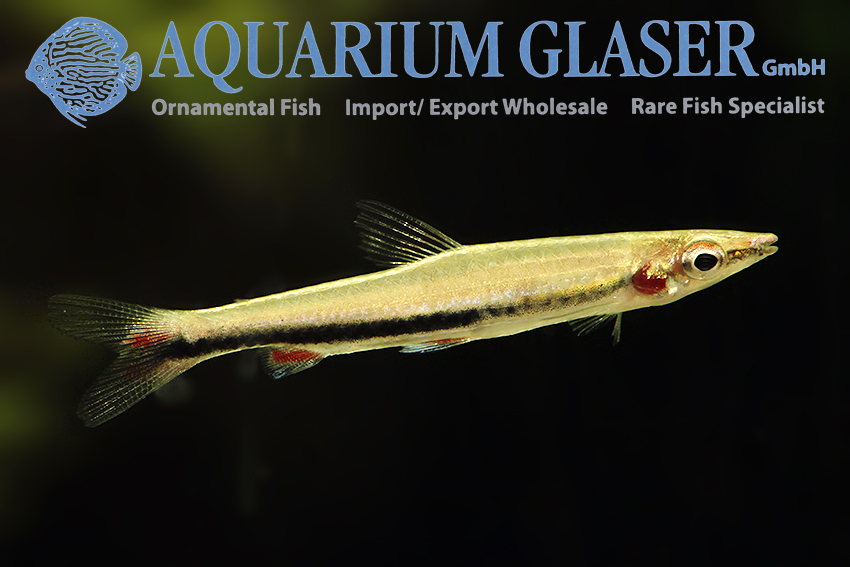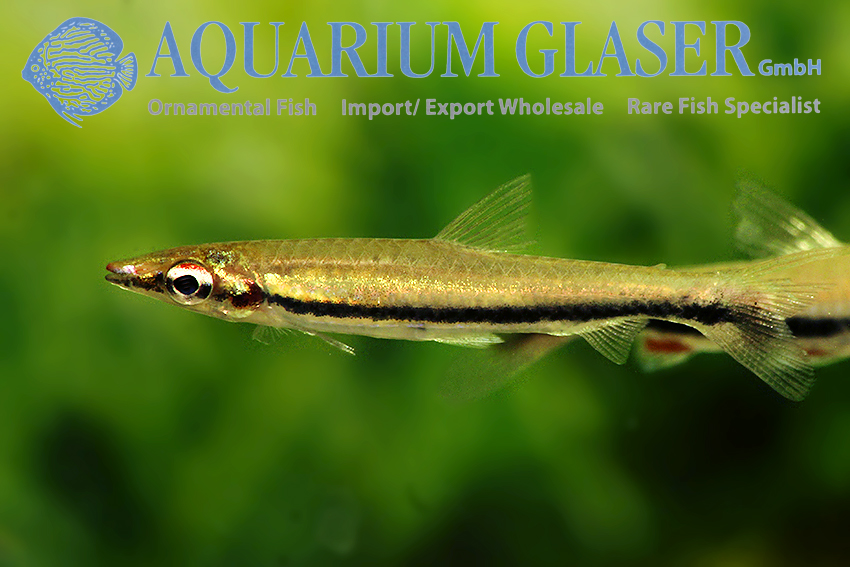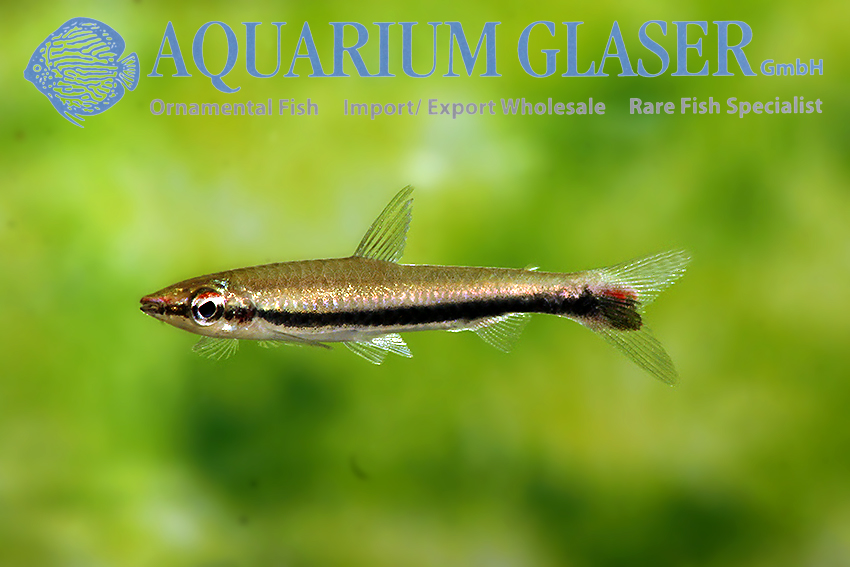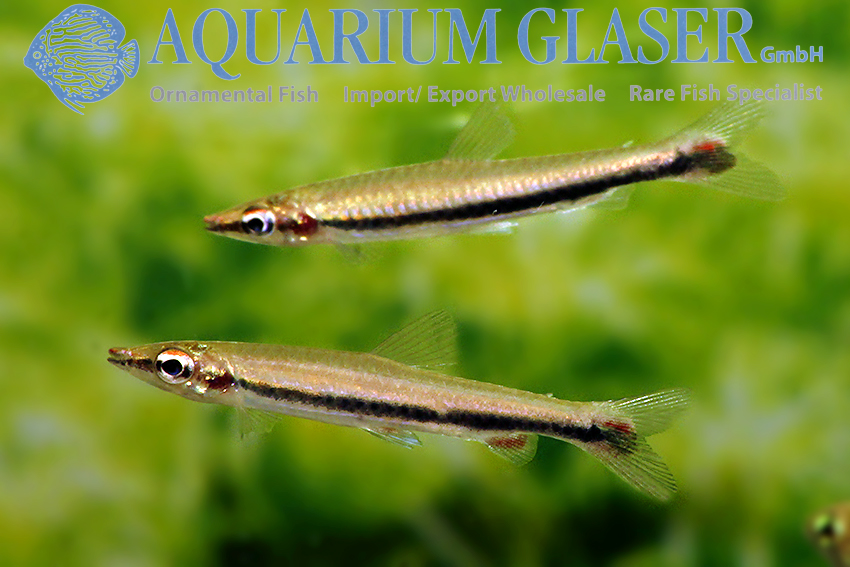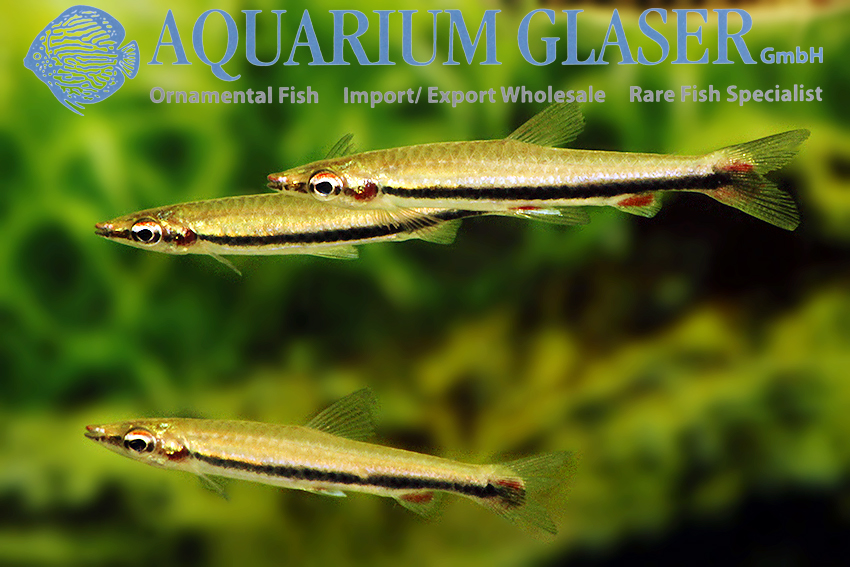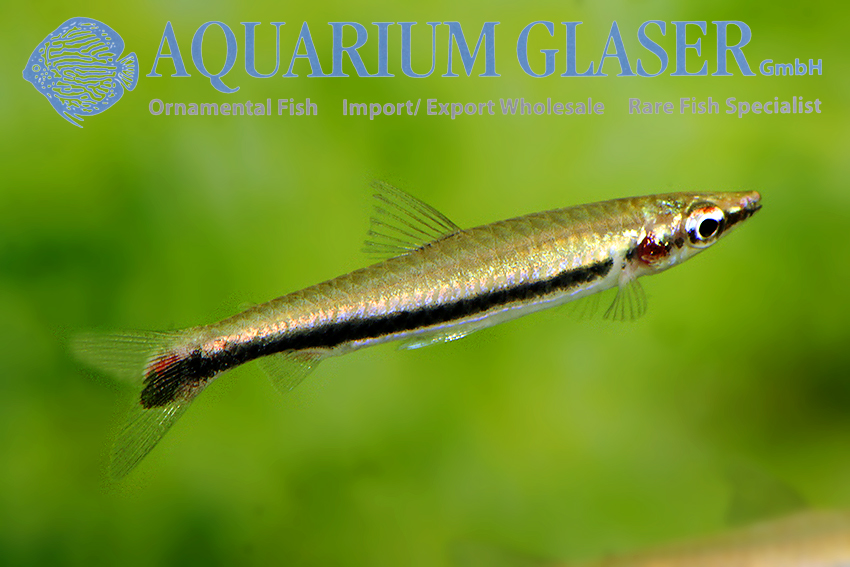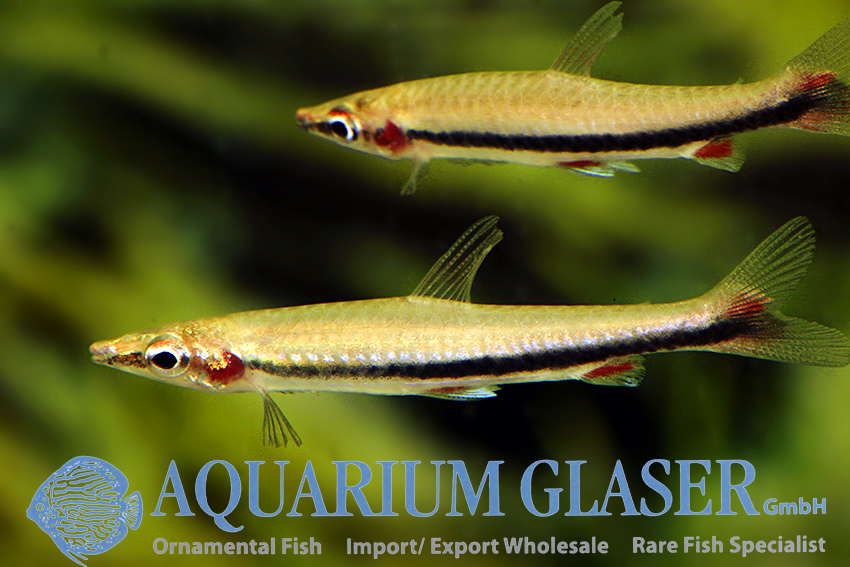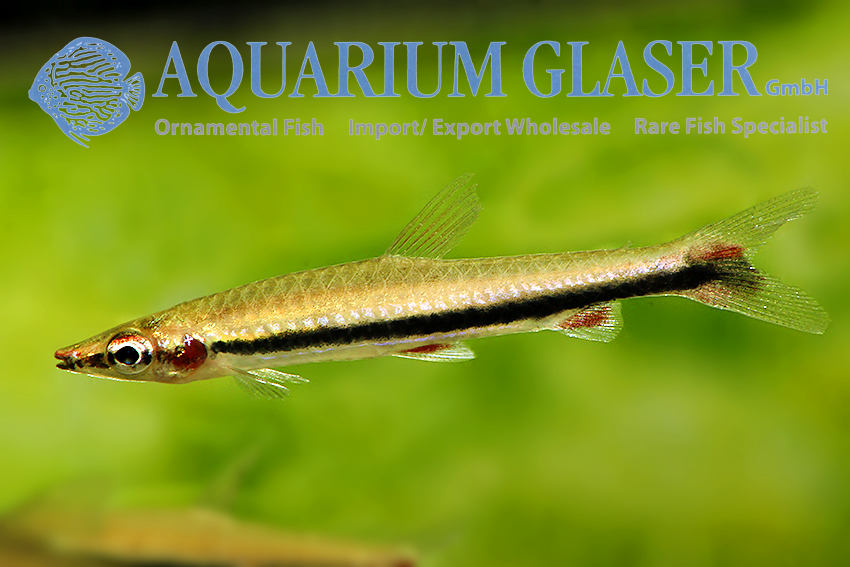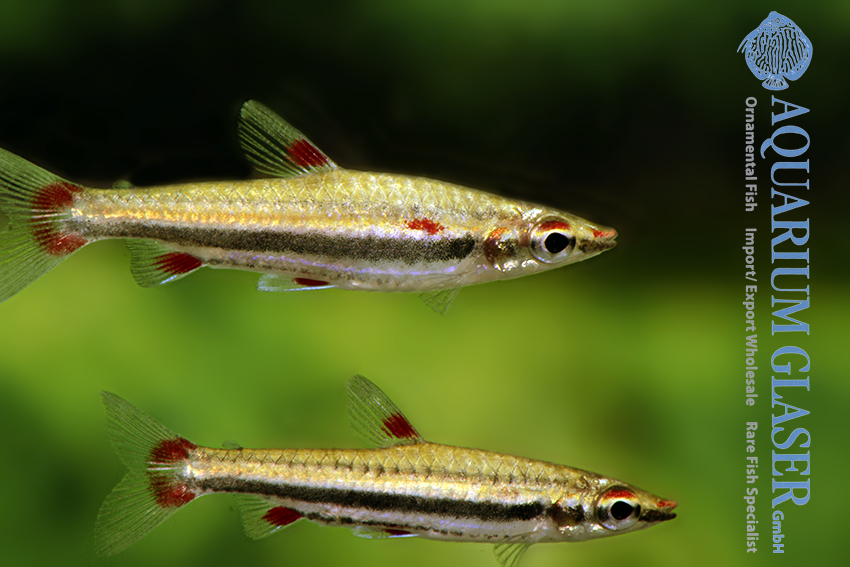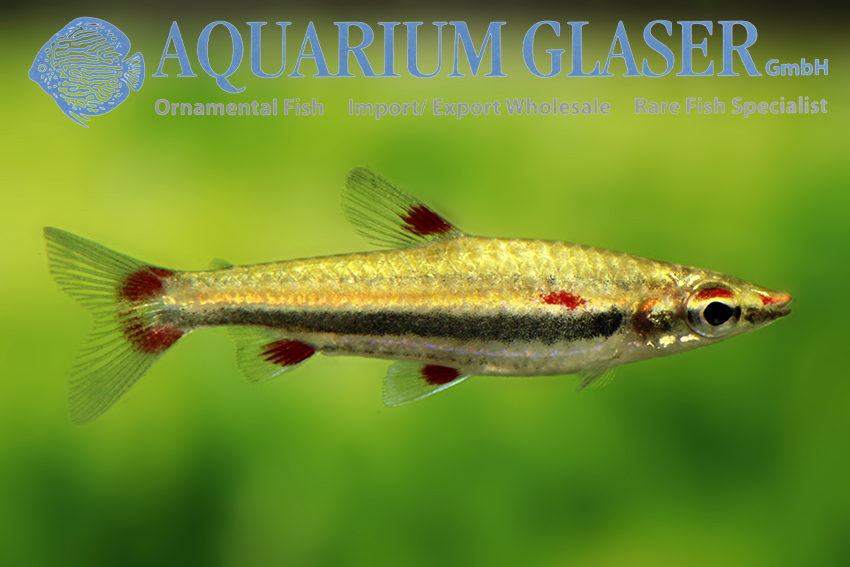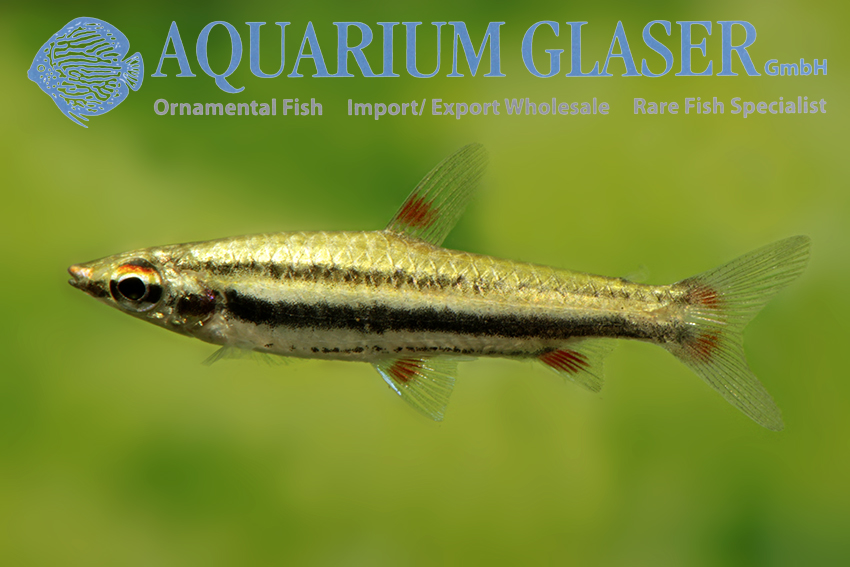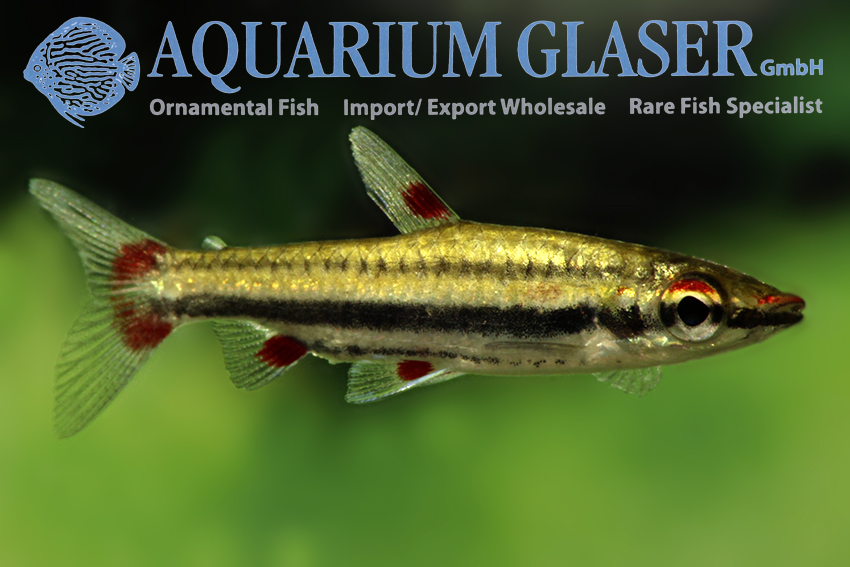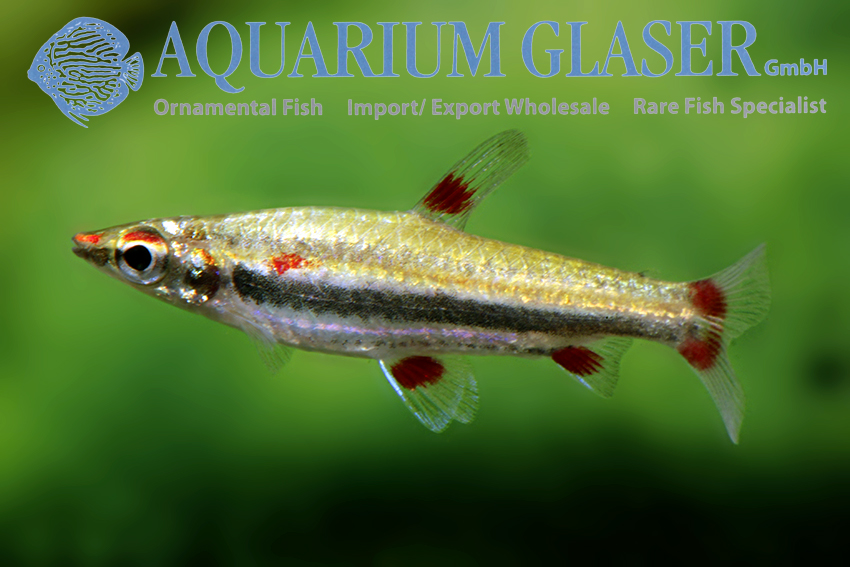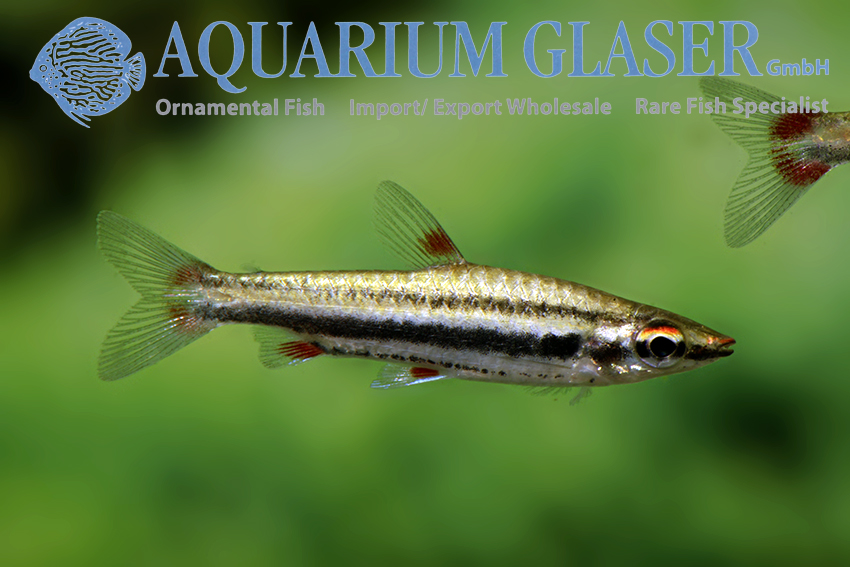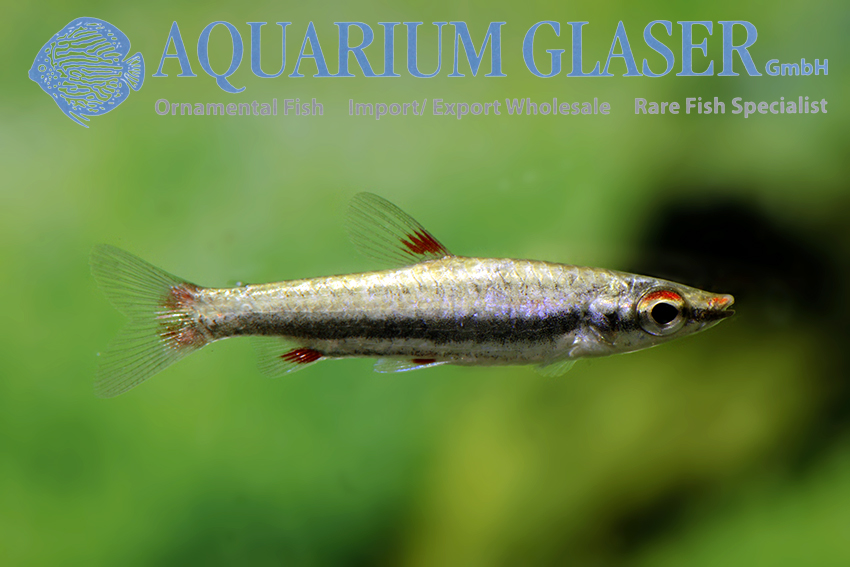The Blackstripe pencilfish has been described from Guyana scientifically back in 1909. Here he fish inhabits exclusively the Demerara river basin. The beautiful species attains a maximum length of 4.5 cm and is very peaceful. Formerly the fish was placed in a separate genus, namely Poecilobrycon, due to the long snout. In the meantime the genus Poecilobrycon is considered to be a synonym of Nannostomus. Males differ from the females by the shape of the anal fin. Moreover this fin has a high degree of red coloration in males which is lacking in females.
There is a certain similarity between Nannostomus unifasciatus and N. harrisoni; in contrast to N. unifasciatus N. harrisoni does not swim in a head-up position as N. unifasciatus regulary does. So a confusion of living fish should be excluded.
After many years we can offer now this beauty again. The fish are wild collected ones from Guyana.
For our customers: the animal has code 272004 on our stocklist. Please note that we exclusively supply the wholesale trade.
Text & photos: Frank Schäfer





